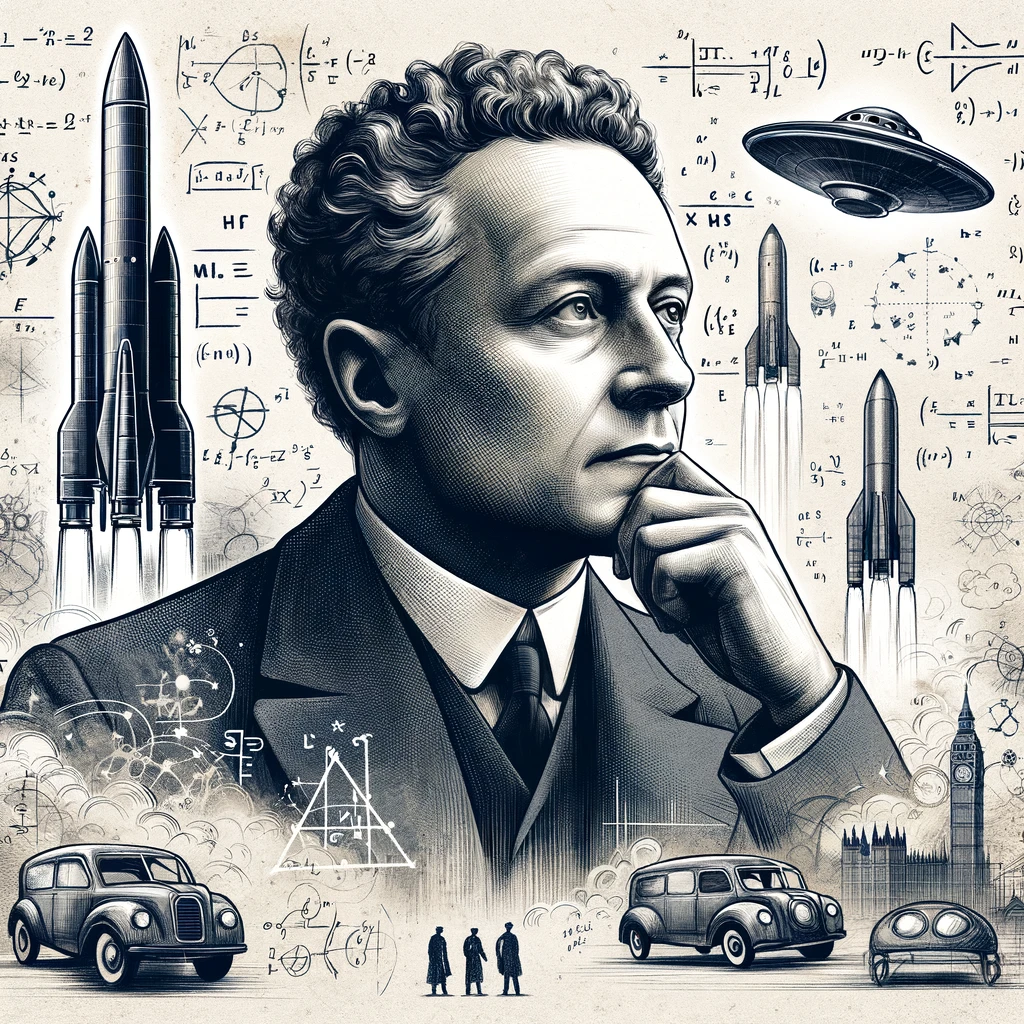Hermann Oberth

On July 24, 1969, Wernher von Braun and Hermann Oberth were interviewed for a German TV program, providing insights into the journey of space exploration from mere fantasy to tangible reality. The discussion began with a reflection on how the once fantastical visions of space travel had become feasible, citing the pioneering American Robert Goddard’s belief in the progression from dreams to reality. The narrative traced back to Jules Verne’s novel about a voyage from the Earth to the Moon, which inspired a young Hermann Oberth in Transylvania. Oberth’s fascination with space led him to write a book on rocket travel to planetary spaces as a young physics and mathematics teacher, laying foundational concepts for space exploration.
The book written by Hermann Oberth that laid foundational concepts for space exploration was called “Die Rakete zu den Planetenräumen” (The Rocket into Planetary Space). This influential work, published in 1923, detailed the theoretical basis of rocketry and space travel, significantly contributing to the field of astronautics and inspiring future pioneers like Wernher von Braun.
Wernher von Braun, at the age of 13, came across Oberth’s book, which despite its complex mathematical formulations, ignited his passion for space travel, setting the course for his life’s work. Von Braun’s contributions were pivotal in making the lunar journey a reality, highlighting a direct lineage of influence from Verne to Oberth to von Braun. The interview took place in Salzburg, where von Braun had traveled to congratulate Oberth on his 75th birthday, allowing for a rare conversation between two space travel pioneers.
Oberth revisited his 1923 predictions about the feasibility of space travel, emphasizing the accuracy of his theses in light of recent space missions, such as Apollo 10’s lunar orbit, which served as a dress rehearsal for the moon landing. Both pioneers reflected on the economic implications of space exploration, noting the tangible benefits already realized through telecommunications satellites and the potential for future advancements in resource discovery and weather forecasting.
The conversation also touched on the historical challenges faced by early rocketry experiments in Germany, where both von Braun and Oberth worked together. Despite initial setbacks and skepticism, their perseverance laid the groundwork for the monumental achievement of landing humans on the Moon. Von Braun humbly acknowledged his lifelong learning from Oberth, illustrating the profound impact of mentorship and collaboration in the field of astronautics.
As the interview concluded, the anticipation for the upcoming moon landing was palpable, not just among the pioneers but also among the broader public and the studio audience, underscoring the global captivation with this historic venture into space.
Hermann Oberth’s lecture notes from 1954 on the properties of UFOs provide an intriguing glimpse into his thoughts and observations regarding unidentified flying objects. Oberth described various shapes and behaviors of UFOs, noting that they often appeared as disks or ellipsoids and could rapidly change formation. He highlighted their ability to fly with great speed and maneuverability, often exhibiting accelerations that would be impossible for humans to withstand. Oberth also mentioned that these objects could appear in different colors, ranging from dark orange and cherry red at night to extremely white at high speeds or during rapid acceleration. His lecture notes also look into the phenomena of UFOs being sighted more frequently near bodies of water and military installations, particularly those associated with nuclear capabilities. The detailed observations and hypotheses put forth in these notes reflect Oberth’s deep engagement with the subject matter, capturing a moment in time when the scientific community was grappling with the reality and implications of UFO sightings.


